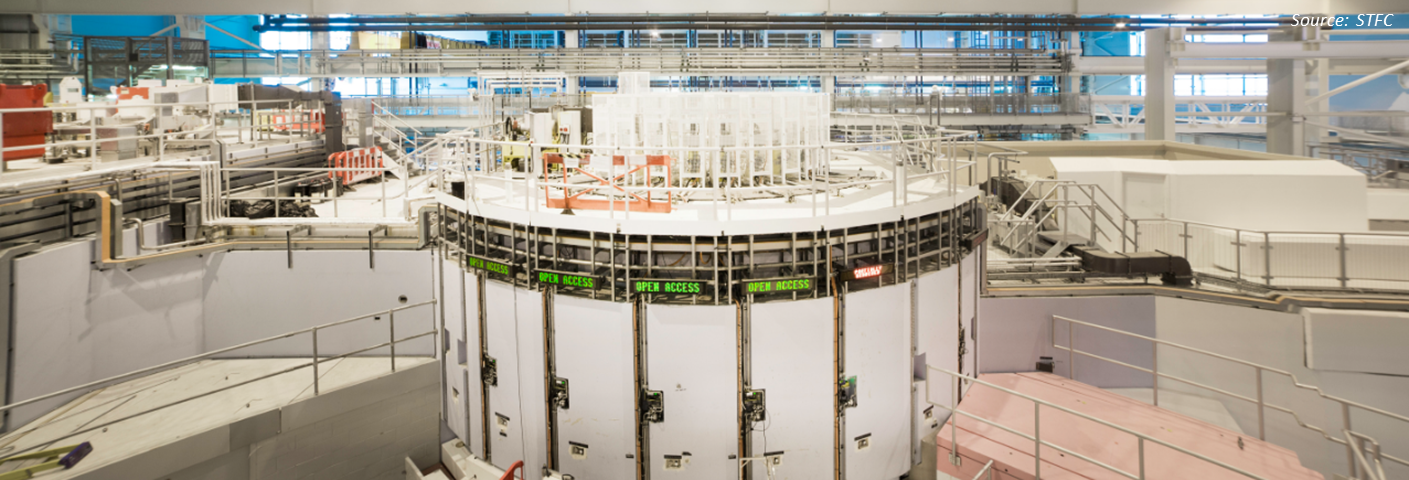Challenge
The Science and Technology Facilities Council (STFC) ISIS facility at the Rutherford Appleton Laboratory provides neutrons and muons to probe materials for research by scientists and industrialists from across the world. An essential element is the ‘accelerator’ (an H– ion source, 70 MeV linear accelerator (Linac) and 800 MeV synchrotron); with some major elements dating from the 1950’s it is becoming more difficult and expensive to maintain. At the same time, due to retirement, ISIS is gradually losing the deep knowledge of those individuals who designed, built and operated the accelerator from the 1980’s.
It is, therefore, a challenging time for ISIS as it seeks to continue delivering a high-reliability supply of neutrons and muons, while preparing for replacement of major vulnerable components (including a Linac Tank 4) and the design, build and operation of a modern successor – ISIS II.
Against this backdrop STFC engaged RED Scientific to undertake an independent study of the principles underpinning ISIS accelerator operations; principles which have changed little since routine operations started in 1985.
Approach
The study was split into three phases:
- Phase 1 – Understand existing accelerator operations, the challenges faced and immediate opportunities for improvement;
- Phase 2 – Model and Analyse the deployment of scarce ‘engineering’ resources and how this might affect Accelerator performance;
- Phase 3 – Refine the modelling of Phase 2 to analyse the sustainability of alternative plans for operation of the accelerator, in particular the implications of changing Run Time and maintenance philosophy. This involved:
- An analysis of accelerator Lost Time data to identify both causes of trips and time to repair;
- A review of alternative maintenance philosophies and their application at ISIS;
- Development of a ‘Balance Model’ for ISIS which links accelerator maintenance, performance, resource use, cost and run-cycle.
The Study was overseen by a Working Group of senior managers and technical experts.
Outputs
The study delivered:
- A review of current accelerator operations (in terms of Direction, Delivery, Management, Support), highlighting areas for possible immediate improvement (Quick Wins);
- A calibrated Excel ‘Balance Model’ used to explore the implications of:
- Modifying investment in major equipment upgrades and Linac Tank replacement;
- Implementing a computerised system for maintenance and asset management;
- Changing accelerator run-time for scientific users.
- Recommendations for enhancing the gathering and use of data to:
- Better predict and respond to equipment failures and trips;
- Understand equipment reliability and support decision making on maintenance strategy.
As a result senior managers responsible for the ISIS accelerator have a shared understanding of:
- What constitutes ‘good’ accelerator performance;
- The current pool of engineering resource, it’s deployment and likely evolution over the medium term;
- The pros and cons of alternative maintenance strategies (preventative vs responsive);
- The types of equipment trips responsible for lost time;
- Implications of strategic changes to operations for accelerator costs and performance;
- Opportunities to improve the management of equipment trips, prediction of reliability problem and optimisation of maintenance planning.
Initiatives are in place to progress all of the recommendations.



